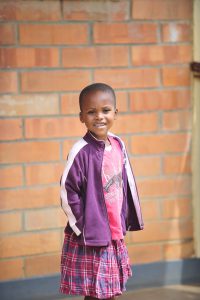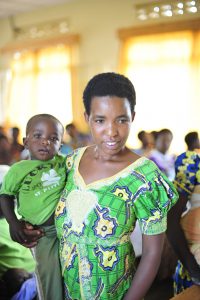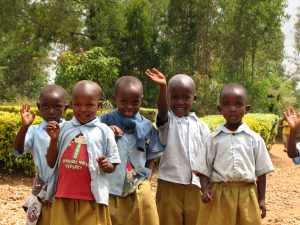In late May, Shot@Life traveled to Rwanda with six congressional staff members to learn firsthand about child health and vaccine programs in Sub-Saharan Africa. In recent years, Rwanda has achieved stunning advancements in child health in part through close collaboration with the United Nations and U.S. government. Showing congressional offices the real-life impact of taxpayer investments is a powerful advocacy tool that can lead to an increase in support from Congress for immunization programs.
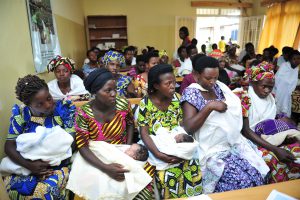
Mothers often walk for hours to reach health clinics. On this particular day, the clinic was providing polio and tuberculosis vaccines to children.
Why Rwanda?
Rwanda is a true child health success story. Since the mid-1990s, Rwanda has rebuilt its health infrastructure and made childhood immunizations a top priority. The country has managed to lower the child mortality rate from 234 deaths per 1,000 live births to 42, a feat that is largely thanks to increased immunization efforts. Today, Rwanda has some of the highest vaccine coverage rates in Sub-Saharan Africa, higher even than in some areas of the United States, particularly for the measles vaccine.
Proud Mothers, Healthy Children
During our trip to Rwanda, Shot@Life representatives and the congressional staff had an opportunity to visit health clinics in Gasabo Ndera and Murambi to speak with doctors and nurses about the range of services they provide. We heard moving first-hand accounts of proud mothers who walked for hours to bring their children into the clinic to receive their vaccinations. As Christine Umurerwa, a mother of two, told us at the Murambi clinic: “I want to protect my children. I make sure they get all the vaccinations they need and we all sleep with a bed net.”
The Role of Community Health Workers
One factor in Rwanda’s public health success is its vast network of over 66,000 community health workers, with three workers assigned per village. These health workers are responsible for providing their village’s families with everything from sanitation education to malaria testing. If a family misses a check-up or vaccination at the local clinic, these workers will follow up with the family to make sure no child is missed.
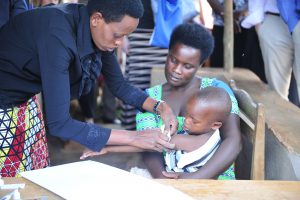
A community health worker measures the circumference of a child’s arm to assess his nutritional status.
Transforming Health Supply Chain Management
While in Rwanda, our group also spent time learning about an innovative new training program that will equip health workers with the latest advancements in supply chain management. The East Africa Center of Excellence is spearheaded by Shot@Life partner, Gavi, the Vaccine Alliance, and has already begun to train its first batch of students. Modernizing supply chain administration helps stretch investment dollars by ensuring that health commodities like vaccines are stored efficiently, transported under safe conditions, and ultimately delivered to children in need.
An Inspirational Reminder
Around every turn, I was amazed at how the Rwandan people have managed to transform their country’s health system, largely through thorough planning by the government of Rwanda and by collaborating with U.N. agencies like UNICEF and WHO. Overall, the trip was an inspiring reminder that Shot@Life’s mission to advocate for global vaccines has a tremendous impact protecting children and families around the world.
For more photos from our recent trip to Rwanda, visit: https://www.flickr.com/photos/shotatlife/albums/72157669629266871

